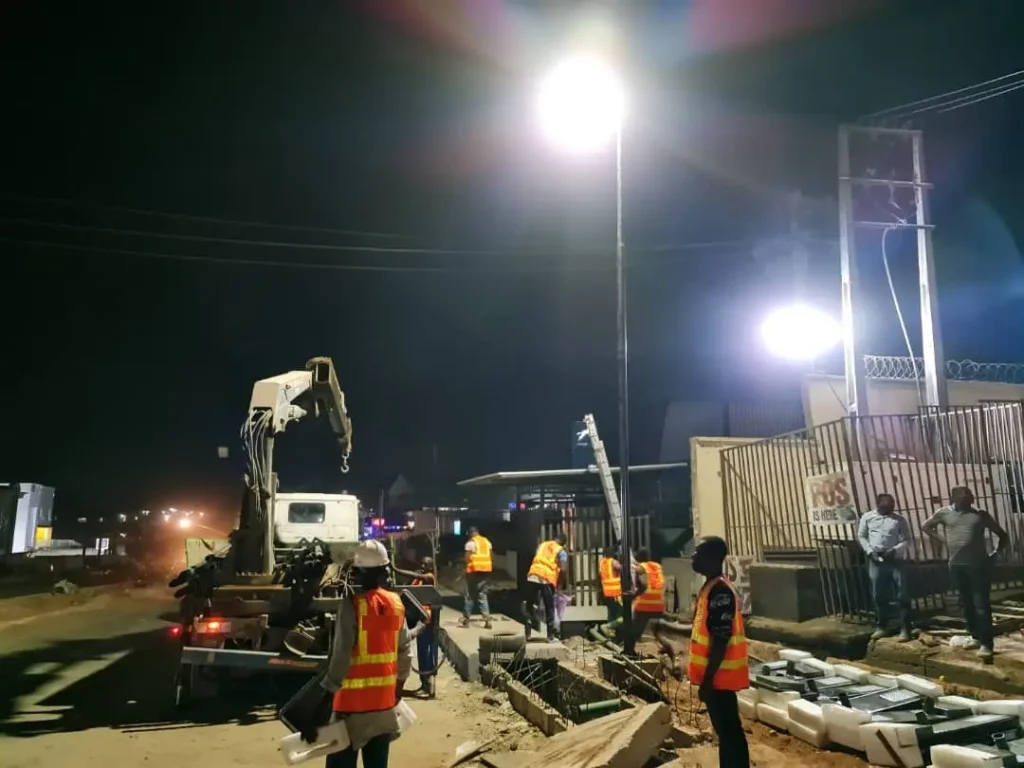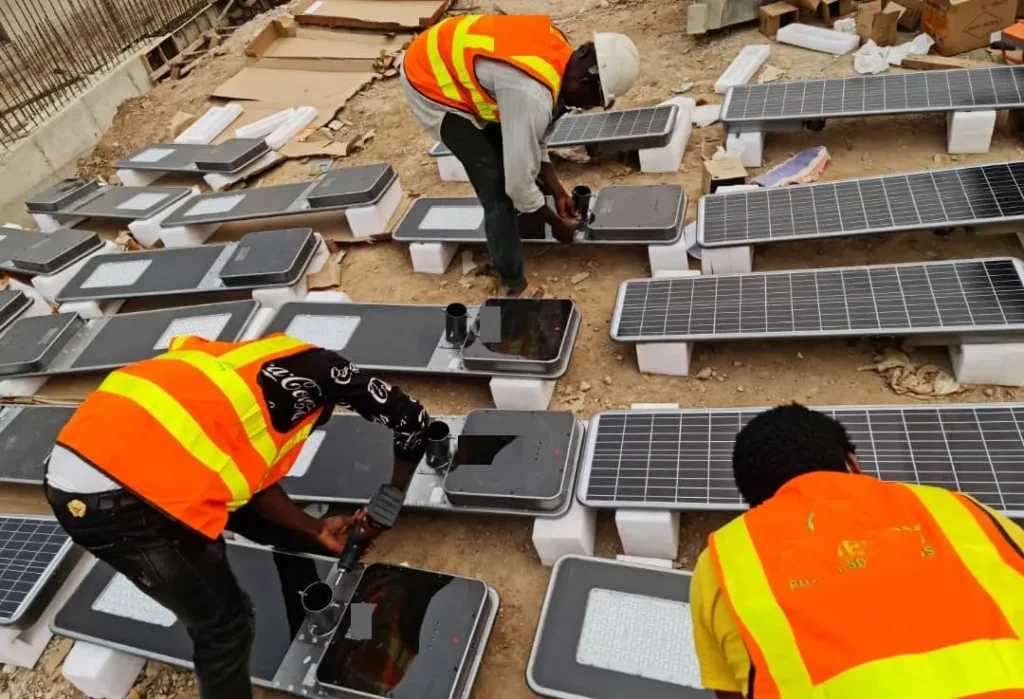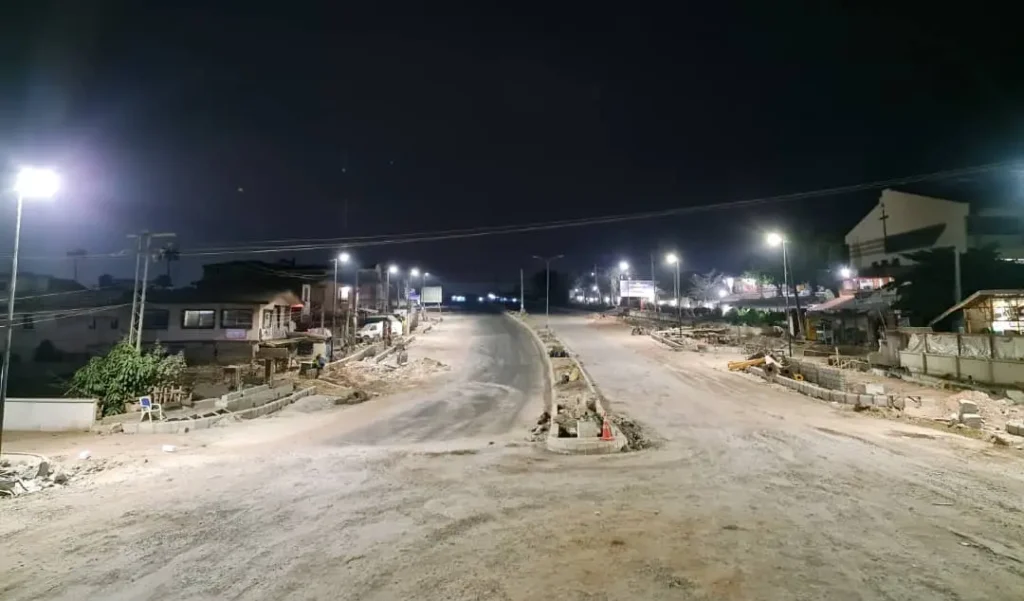As global attention on sustainable development and clean energy continues to grow, solar lighting technology has demonstrated significant potential in addressing lighting needs in areas with limited access to electricity. Nigeria, as the most populous country in Africa, faces substantial challenges in infrastructure development due to rapid urbanization—particularly in the field of street lighting.

1. Project Background and Needs Analysis
1.1 Current State of Lighting and Challenges in Nigeria
Nigeria is Africa’s largest economy, with a population exceeding 200 million. The acceleration of urbanization has led to a surge in infrastructure demand. However, power supply has long been a bottleneck in its development. According to statistics, approximately 40% of the country lacks access to a stable power grid, and frequent power outages are common. This shortage directly impacts street lighting, especially in emerging communities and remote areas, where streets remain dark at night—posing numerous challenges for residents’ daily lives and safety.
-
Unstable power supply: Traditional grid-powered streetlights cannot operate continuously due to frequent outages, and their installation and maintenance costs are high.
-
Safety hazards: Poor lighting contributes to increased nighttime traffic accidents, higher crime rates in communities, and restricted mobility.
-
Economic constraints: A coal-dependent energy structure leads to environmental pollution and high operational costs.
-
Resident needs: Communities urgently require stable, economical, and eco-friendly lighting solutions to enhance quality of life.
To address these challenges, a street in Nigeria initiated a solar streetlight project, leveraging the region’s abundant solar resources (over 2,500 annual sunshine hours on average) to explore new approaches for clean-energy lighting.
1.2 Project Requirements
Through on-site surveys, the project team identified the following core requirements:
-
High-brightness lighting: Ensure sufficient visibility on roads, sidewalks, and public spaces at night to enhance safety and comfort.
-
Energy independence: Reduce reliance on an unstable power grid by using solar power, thus lowering the carbon footprint.
-
Climate adaptability: Given Nigeria’s hot and rainy climate, the lights must be waterproof, dustproof, and heat-resistant.
-
Easy maintenance: Select equipment that is simple to install and maintain, considering local technical limitations.
-
Smart functionality: Support intelligent sensing and remote monitoring to enhance energy efficiency and management.
These requirements formed the basis for selecting the Sresky Basalt solar streetlight solution.
2. Technical Solution Design
2.1 Core Advantages of the Sresky Basalt Solar Streetlight
The Sresky Basalt series, with innovative technology and strong performance, became the preferred solution for the project. Key features include:
-
Flexible brightness options: Provides brightness levels from 4,000 to 12,000 lumens. For example, the SSL-912A model (12,000 LM) is ideal for main roads, while the SSL-94A (4,000 LM) suits community pathways.
-
High-efficiency solar panels: Utilizes monocrystalline silicon panels with 21% conversion efficiency, maximizing the benefits of Nigeria’s abundant sunlight.
-
Long-lasting battery: Features a Power Li-ion battery with TCS (Temperature Control System) technology, ensuring stable operation at temperatures up to 40°C and over 2,000 charge cycles.
-
Smart lighting management: Patented ALS2.4 technology dynamically adjusts brightness via adaptive algorithms. Three lighting modes:
-
M1 Mode: 30% constant brightness + PIR motion sensing until dawn.
-
M2 Mode: 100% brightness for 5 hours + 25% brightness with PIR for 5 hours + 70% constant brightness until dawn.
-
M3 Mode: 70% constant brightness for continuous stability.
-
-
PIR motion sensor: 120° wide-angle detection with an 8-meter range for responsive lighting.
-
Robust durability: Integrated aluminum frame, IP65 waterproof rating, IK08 impact resistance—suitable for heavy rains and dusty environments.
-
Easy installation and maintenance: Modular design with replaceable components reduces installation complexity and technical barriers.
2.2 Technical Highlights
Sresky’s innovations give the Basalt series several technical advantages:
-
ALS2.4 adaptive lighting system: Ensures continuous lighting for five rainy days by adjusting discharge power, overcoming the limitations of traditional solar lights.
-
TCS battery temperature control: Enhances battery life and performance in tropical climates like Nigeria.
-
Automatic status monitoring: Fault detection and alert system enables timely maintenance.
-
Scientific light distribution: High-penetration optics ensure uniform coverage without dark spots.
2.3 Deployment Plan
To optimize lighting efficiency, the project follows these installation parameters:
-
Mounting height and spacing: SSL-94A at 4 meters height and 18 meters spacing; SSL-912A at 12 meters height and 54 meters spacing.
-
Foundation: Constructed with C20-grade concrete to ensure the pole’s stability.
-
Installation process: Assemble lights and brackets, secure them to poles, then hoist and connect the systems.
3. Impact and Sustainable Value
This project delivers both immediate and long-term benefits to the community:
-
Improved resident safety and quality of life: Enhanced night visibility promotes safer travel and reduces accidents.
-
Green energy transition: Establishes a zero-carbon solution, showcasing a replicable model for sustainable urban development.
-
Local job creation: Equipment installation and training foster technical capacity within the community.
-
Operational savings: Cuts reliance on diesel generators or unstable grid power, lowering long-term costs.
-
Policy support confidence: Demonstrates solar lighting’s feasibility and encourages other municipalities to adopt similar solutions.
Summary
The solar streetlight project in a Nigerian street successfully addressed local lighting challenges by deploying the Sresky Basalt series. It brought significant improvements in safety, sustainability, and operational efficiency. This project showcases Sresky’s technical expertise and offers a replicable model for other regions in Africa facing similar infrastructure constraints.

